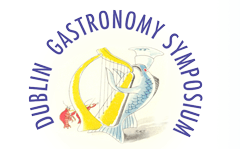Start Date
31-5-2016 11:00 AM
End Date
31-5-2016 12:30 PM
Description
For the purpose of this research, academic material and online sources were utilised to clarify the meaning of the key term sous vide.
The Sous Vide Advisory Committee (1991) says ‘Sous Vide (also known as Cuisine en Papillote) is an interrupted catering system in which raw or par-cooked food is sealed into a vacuumised laminated plastic pouch or container, heat treated by controlled cooking, rapidly cooled and then reheated for service after a period of chilled storage’. According to Herbst (1995), the term ‘refers to a cooking method of French origin and directly translates into “under vacuum”’. In the words of Escolar (2008), it is ‘a temperature precise poach utilizing vacuum sealed product’; while Baldwin (2009) calls it ‘a method of cooking in vacuumised plastic pouches at precisely controlled temperatures’.
Recently published books (Myhrvold et al. 2011; Stampfer 2009; Keller 2008) featuring the method would suggest that the process has seen an increase in popularity over the last number of years.
Advances in food science with regard to the foodmanufacturing industry and the interest by an increasing number of chefs to take a scientific approach to cooking has helped to advance the sous vide method as part of modern food production. In the catering sector, especially high-end gastronomy, it has gained substantial momentum for its benefits, such as aromatic, textural, and nutritional improvements (Costa and Sarkar 2008).
Secondary research was carried out to establish a comprehensive knowledge on the subject area of sous vide cookery, including advantages, disadvantages, methods and strategies. In order to explore the possible popularity of sous vide cooking in high-end restaurants in Ireland, the author contacted two chefs of Irish Michelin stared restaurants who are applying the method extensively:
- Chef owner Ross Lewis of Dublin’s, Michelin starred restaurant ‘Chapter One’
- Chef owner Enda McEvoy of Galway’s, Michelin starred restaurant ‘Loam’
The Sous Vide Revolution: Coming Full Circle and Beyond
For the purpose of this research, academic material and online sources were utilised to clarify the meaning of the key term sous vide.
The Sous Vide Advisory Committee (1991) says ‘Sous Vide (also known as Cuisine en Papillote) is an interrupted catering system in which raw or par-cooked food is sealed into a vacuumised laminated plastic pouch or container, heat treated by controlled cooking, rapidly cooled and then reheated for service after a period of chilled storage’. According to Herbst (1995), the term ‘refers to a cooking method of French origin and directly translates into “under vacuum”’. In the words of Escolar (2008), it is ‘a temperature precise poach utilizing vacuum sealed product’; while Baldwin (2009) calls it ‘a method of cooking in vacuumised plastic pouches at precisely controlled temperatures’.
Recently published books (Myhrvold et al. 2011; Stampfer 2009; Keller 2008) featuring the method would suggest that the process has seen an increase in popularity over the last number of years.
Advances in food science with regard to the foodmanufacturing industry and the interest by an increasing number of chefs to take a scientific approach to cooking has helped to advance the sous vide method as part of modern food production. In the catering sector, especially high-end gastronomy, it has gained substantial momentum for its benefits, such as aromatic, textural, and nutritional improvements (Costa and Sarkar 2008).
Secondary research was carried out to establish a comprehensive knowledge on the subject area of sous vide cookery, including advantages, disadvantages, methods and strategies. In order to explore the possible popularity of sous vide cooking in high-end restaurants in Ireland, the author contacted two chefs of Irish Michelin stared restaurants who are applying the method extensively:
- Chef owner Ross Lewis of Dublin’s, Michelin starred restaurant ‘Chapter One’
- Chef owner Enda McEvoy of Galway’s, Michelin starred restaurant ‘Loam’

Comments
Parallel Session 1, Day 1, May 31, 2016.